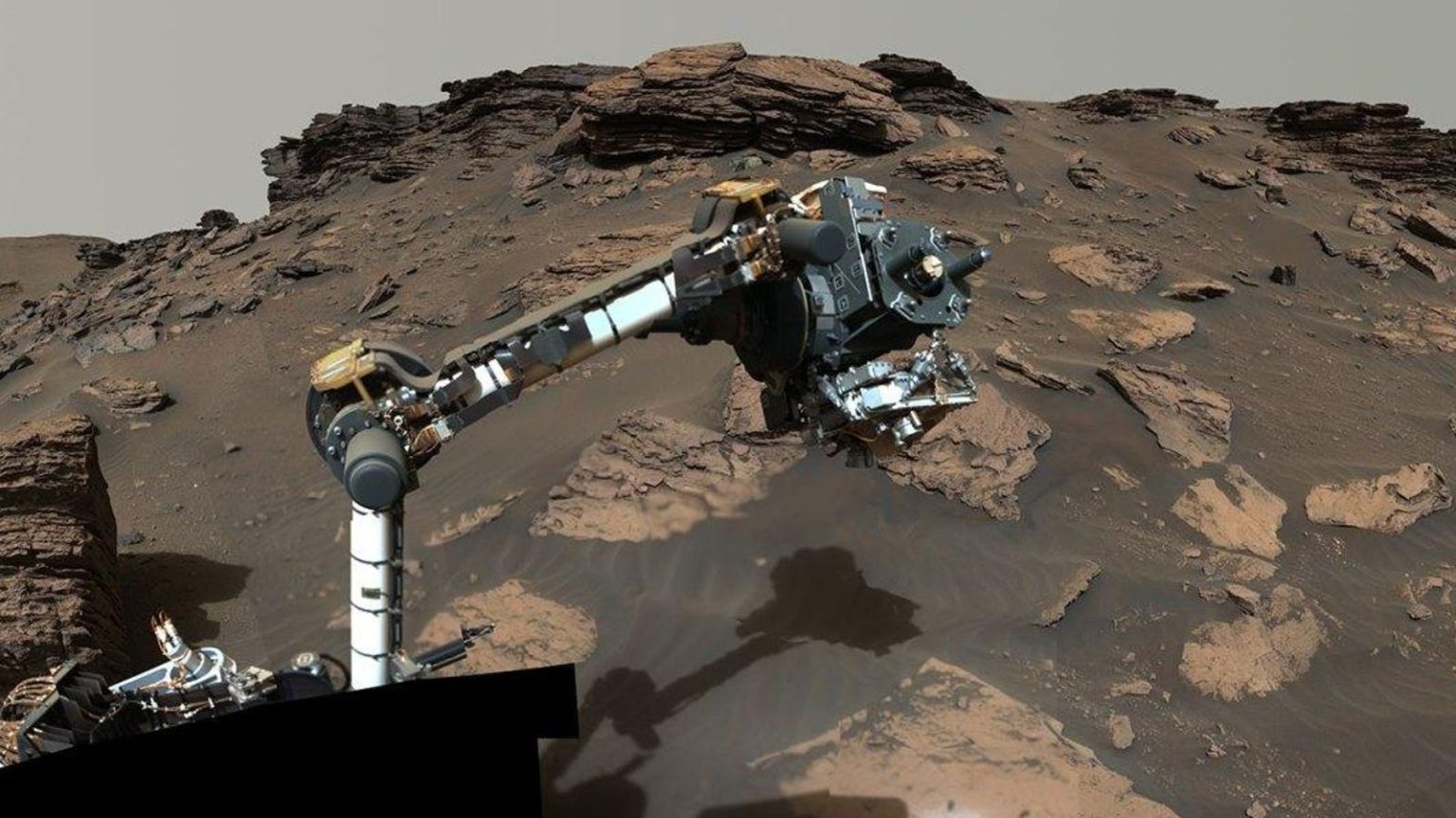It can be hard enough to fix a technical issue on Earth. NASA’s Perseverance Mars rover team is trying to fix a technical problem on a robot on another planet. There’s a stuck dust cover on an important instrument that helps the rover search for organic compounds. It’s putting a crimp on some of the rover’s science operations.
The SHERLOC instrument has a lengthy official name: Scanning Habitable Environments with Raman & Luminescence for Organics & Chemicals. SHERLOC is mounted on the rover’s robotic arm and includes cameras, a laser and a spectrometer. The instrument’s dust cover has been acting up since January 6. It’s now partially open. “With the cover in its current position, the instrument cannot use its laser on rock targets, and cannot collect spectroscopy data,” NASA said in a statement on February 13.
Dust is a persistent challenge on Mars. The planet is dry and windy and prone to dust devils. Dust covers protect some of the rover’s sensitive instruments from the elements.
NASA is in troubleshooting mode. “To better understand the behavior of the cover’s motor, the team has been sending commands to the instrument that alter the amount of power being fed to it,” the agency said. The rover team hopes to stabilize the dust cover so SHERLOC can resume data collection operations.
One goal of the Perseverance mission is to search for signs of ancient microbial life. So far, scientists haven’t found evidence of life on other planets. Mars may be dry and inhospitable today, but it has a history of water and is a prime place to study as we consider the question, “Has life ever existed beyond Earth?” SHERLOC’s role in this quest is to look for molecules that could potentially be connected to life from billions of years ago on Mars.
Perseverance isn’t equipped to make a definitive call on past life on Mars, which is why the rover has been collecting and stashing rock samples in tubes that could be brought back to Earth one day for future study. SHERLOC has helped NASA choose which Martian rocks to sample. SHERLOC has found evidence of organic molecules, but those molecules could have been formed by either geological or biological methods.
There’s one piece of good news. SHERLOC has a color camera called Wide Angle Topographic Sensor for Operations and eNgineering. That works out to “WATSON” to go with the Sherlock Holmes naming theme. WATSON is still functioning. It specializes in close-up photography so scientists can study surface textures and fine details of rocks.
Technical challenges are par for the course on Mars. Perseverance recently lost the companionship of the pioneering Mars helicopter Ingenuity. Ingenuity made history as the first example of powered, controlled flight on another planet. It far outlived its initial mission and completed 72 flights before damaging its rotor blades in January. Ingenuity won’t fly again.
Perseverance has been in residence on Mars since early 2021. It’s exploring the Jezero Crater and the remains of an ancient river delta. The SHERLOC glitch is troublesome, but NASA has a long history of working through technical snafus on Mars. Even if SHERLOC can’t fully recover, the rover has other science instruments on board that will help it continue its Mars science mission.
Read the full article here





